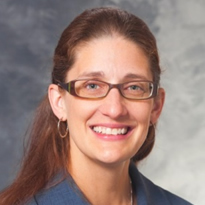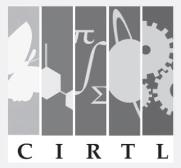Preparing Future Research Faculty to Teach
May 28, 2013

Christine Pfund
Graduate and postdoctoral students at research universities will shape the future of undergraduate science, technology, engineering, and math (STEM) education in the United States. Since almost 80 percent of doctoral students are trained at only 100 research universities, the graduate schools of these institutions are a critical leverage point for improving undergraduate STEM education across the country. If a significant fraction of these universities were to prepare future STEM faculty as teachers of undergraduates, they would seed undergraduate institutions across the country with thousands of faculty and instructional staff who teach effectively and continually improve the teaching and learning process.
The Center for the Integration of Research, Teaching and Learning (CIRTL) brings together activities that graduate education has historically kept apart. UW–Madison, Michigan State University, and Pennsylvania State University founded CIRTL in 2003 with funding from the National Science Foundation (NSF, Robert Mathieu PI). The network now includes 23 research universities across the nation.
Three interrelated core ideas form CIRTL's conceptual framework: the teaching-as-research (TAR) approach is explored through learning community (LC) opportunities that are based on learning-through-diversity (LtD). TAR describes the process of improving student learning in terms that are familiar from disciplinary research. LC and LtD emphasize researchers' rich and productive experiences working in diverse teams to achieve a common goal (see full descriptions at www.cirtl.net). By engaging graduate students and postdoctoral students in professional development based on this framework, CIRTL strives to produce cohorts of STEM faculty who implement effective teaching practices for diverse learners as part of a multifaceted professional career.
In 2003, CIRTL launched its prototype learning community at UW-Madison: the Delta Program in Research, Teaching and Learning (Delta, www.delta.wisc.edu). Since fall 2003 more than 1,600 UW–Madison graduate students and postdocs and 650 faculty and staff members from a range of STEM and social-science disciplines have participated in Delta.

In its decade of operation, Delta has developed an array of offerings, including graduate courses and small-group programs embedded within an interdisciplinary community of STEM graduate students, postdocs, faculty, and staff. Delta instructors are free to design learning objectives, activities, and projects based on their expertise, interests, and goals for the future faculty. The only requirements are that course design and content integrate the three core ideas of TAR, LC, and LtD and that participants have an opportunity to apply what they learn. This allows instructors to explore a variety of approaches to teaching future STEM faculty.
In the 2010–11 academic year Delta provided 15 courses, three small-group facilitated programs, 11 internships, six supplemental workshops, and six monthly roundtable dinners. The offerings continue to evolve and new ones emerge. Courses and program instructors change over time. Some carry forward instructional materials and resources with little change, and others introduce novel components.
To examine learning across Delta's diverse offerings, researchers surveyed more than 300 participants across 39 Delta offerings asking them to describe what they had learned and the steps they would take to teach a concept in their discipline. 23 distinct learning outcomes categories were derived from the survey responses. Participants most frequently mentioned outcomes pertaining to assessment and evaluation, with 230 respondents (73 percent) mentioning the need or intention to assess student learning or teaching effectiveness. Participants also discussed learning goals and outcomes for students (46 percent) and mentioned aspects of student learning (38 percent). Participants also noted the need to acknowledge diverse learners (27 percent) and stated their intent to use a variety of instructional strategies (21 percent).

The three core CIRTL ideas provide a framework for participants to organize the approaches they learn: At least one concept within the CIRTL framework was included in participant responses from across the range of experiences in the Delta program: 45 percent conveyed an LC-related concept, 57 percent noted an LtD-related concept, and just over 90 percent of respondents included mention of at least one TAR-related concept.
One longitudinal study of former doctoral students, being led by WCER research Mark Connolly, found that a majority of respondents (76 percent) applied the knowledge and skills they gained from their teaching development to their subsequent undergraduate teaching. Respondents most frequently cited delivering instruction that increases student engagement (e.g., through active learning, inquiry-based learning, or the creation of LCs within the classroom). They also frequently cited what they had learned in assessment and course preparation and planning.
The 23 institutions in the CIRTL Network are now working to expand local and national efforts to prepare future STEM faculty. While the CIRTL framework links the institutions, each develops its own local LC based on its institutional needs, strengths, and culture. Importantly, the Network learning community provides opportunities for graduate students and post-docs to connect and learn from one another and a diversity of campuses thus better preparing them for faculty position across the spectrum of higher education institutions.
Adapted from Christine Pfund, Robert Mathieu, Ann Austin, Mark Connolly, Brian Manske, & Katie Moore (2012): Advancing STEM undergraduate learning: Preparing the nation's future faculty, Change: The Magazine of Higher Learning, 44(6), 64–72.


